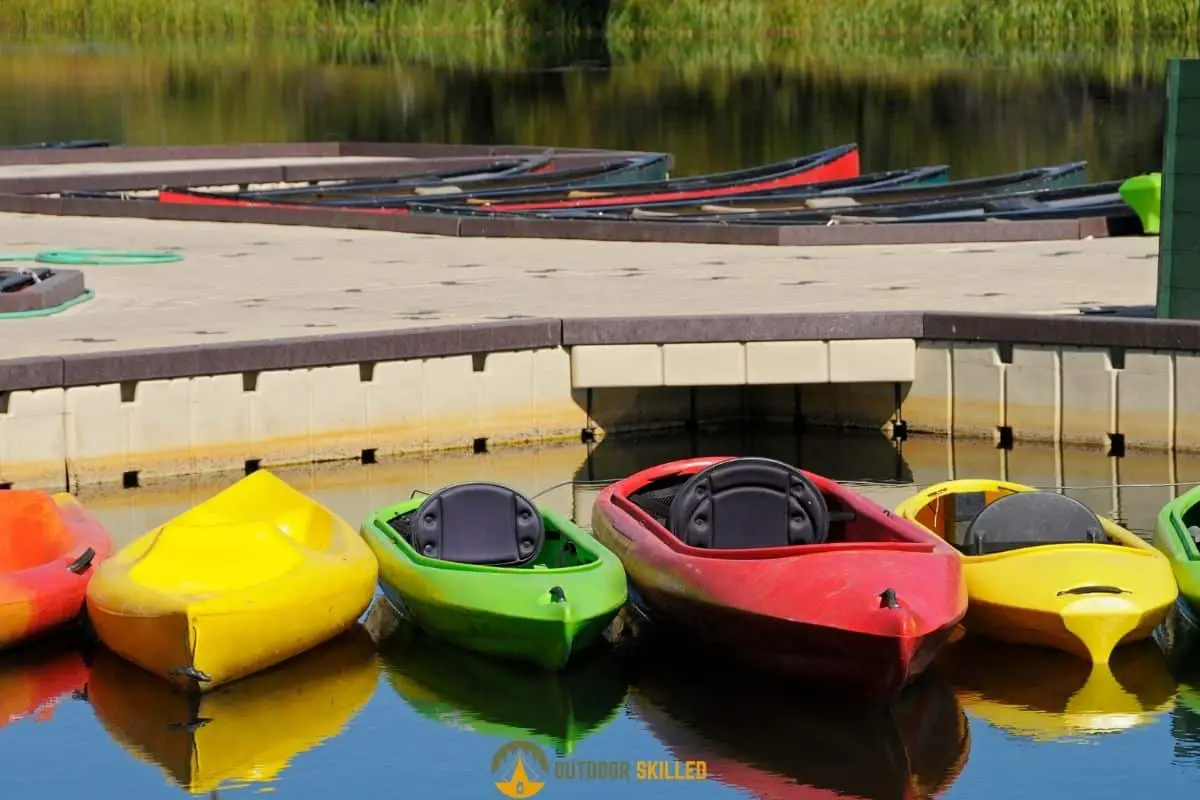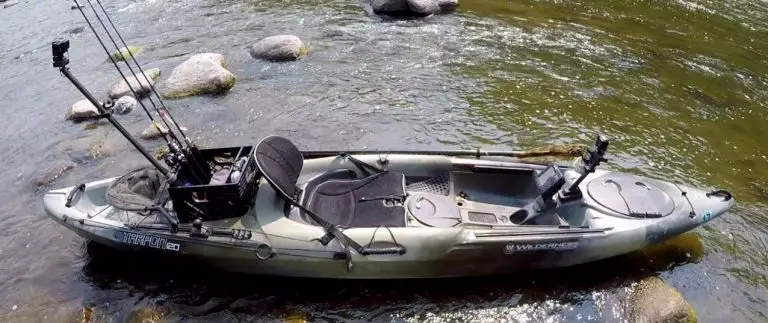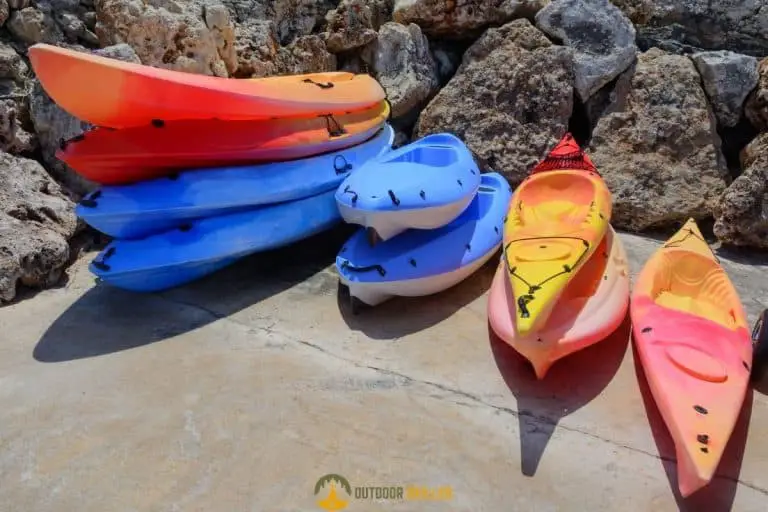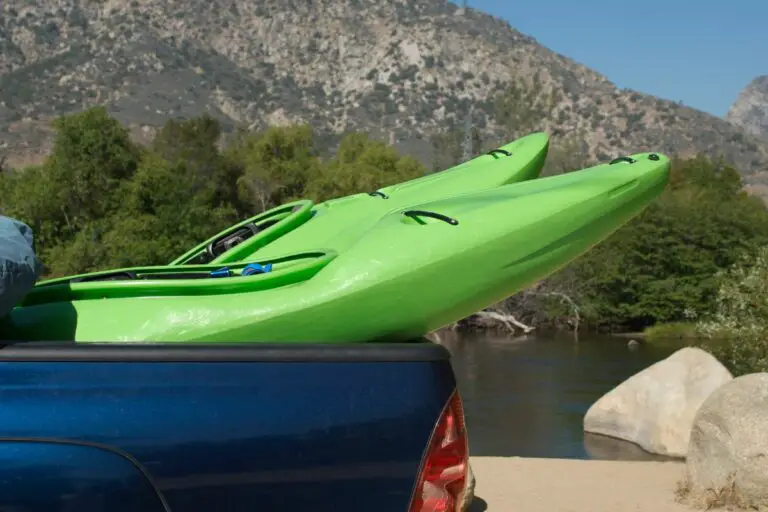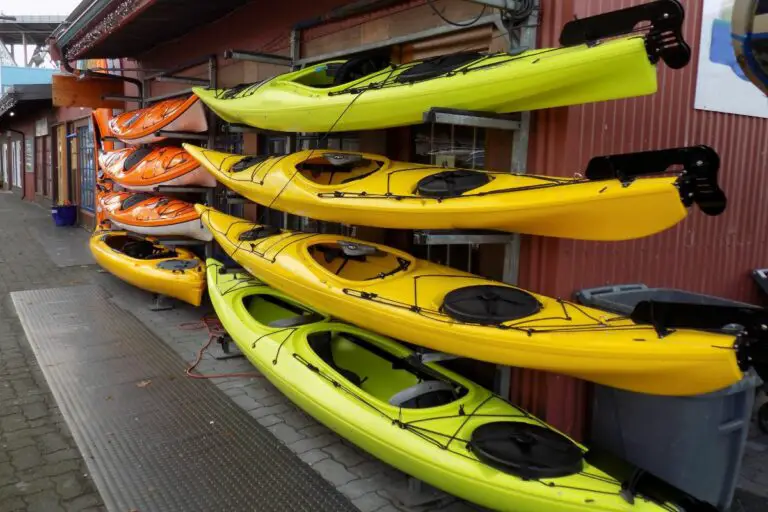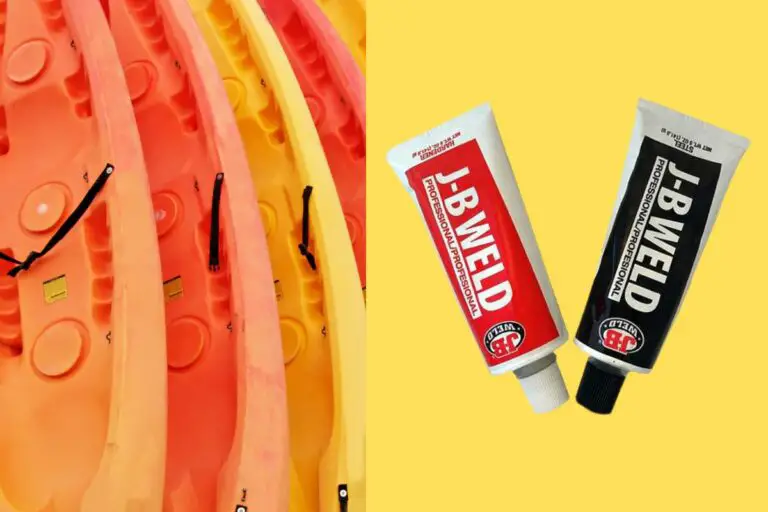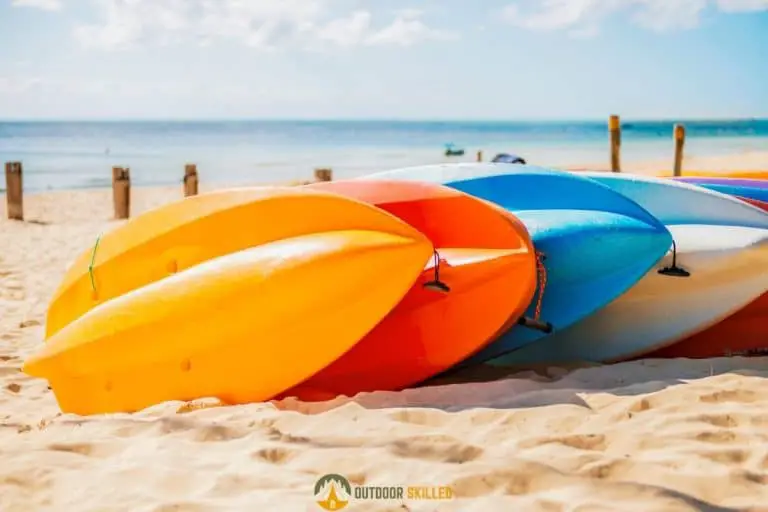Are Fiberglass Kayaks Good? Worth the Money or Not?
An important factor to consider when buying a kayak is its material. Fiberglass material has been developed and used to manufacture since the 1950s and it’s still gaining more popularity in the current times because of the many benefits it offers.
So, are fiberglass kayaks good? Fiberglass kayaks are good indeed. They’re very strong despite being light in weight. They have excellent performance in most water conditions due to their stiff hull and they last longer due to the gel coat outer layer on their surface. Because of all the benefits they offer, they tend to be more expensive.
Keep reading to learn more about the pros and cons of fiberglass kayaks and how to maintain and repair them. If you are looking for good kayaks that won’t break your wallet, you can find my picks for the best kayaks for less than $500 here as well.
Table of Contents
What You Need to Know About Fiberglass Kayaks?

Fiberglass kayaks are the most common type of composite kayaks. They were developed back in the 1950s by drawing out glass into fibers. Hence, the commonly used term ‘fiberglass’.
Fiberglass is an incredible material because when it’s combined with polyester resin it forms a composite material that is both rigid and strong with a much lower weight. The average fiberglass kayak can weigh as little as 12kg.
How Are Fiberglass Kayaks Made?
The process by which fiberglass kayaks are manufactured is called synthetic fabric construction.
In this process, glass is drawn into fibers then these fibers are woven together and layered in an open mold. The kayak is typically constructed from the outside in, so the first layer put into the mold will form the surface layer of the finished kayak.
This surface layer is coated with a special type of colored resin called gel-coat. What makes this gelcoat special is that it contains silica powder which is harder and more resistant to abrasion than regular laminating resin.
What Are the Advantages and Disadvantages of Fiberglass Kayaks?
| Pros | Cons |
|---|---|
| Lighter in Weight | Brittle and prone to cracking |
| Easier to transport, load, and unload | Scratches easily |
| Higher Finish Quality | More expensive |
| Faster and more responsive | Offers features such as storage space and adjustable seating |
| Very durable and can last long |
Fiberglass kayaks have many advantages. They’re light in weight which makes them easy to transport and load into the water.
The finish quality of fiberglass kayaks is higher because of the gel coat that gives the kayaks a mirror-like surface and makes their hulls stiffer. Therefore, they are faster and more responsive than other kayaks and they glide easily on the water. They’re also very durable and can last long with proper maintenance.
However, this material still has some disadvantages such as being somewhat brittle and more prone to scratches in case of direct impact, but the damage is usually minor and doesn’t really affect its speed. When fiberglass is subjected to a heavier kind of impact, it can lead to cracking.
Luckily, fiberglass is very easy to repair. You can repair by yourself or seek a professional and it usually leaves little to no trace of any previous damage.
Another disadvantage of fiberglass kayaks is that they’re usually about a lot more expensive compared to other types of kayaks. Their price range starts at around $1,000 and can go up to $3,000. If your budget is under a grand, you can still find good kayaks and you can start by checking out my picks for the best kayaks under $1,000 here.
This is because of the complexity and higher cost of its manufacturing process. They also provide more beneficial features such as more storage space and adjustable seating.
How to Maintain a Fiberglass Kayak?
Fiberglass kayaks are known to be very durable, and with proper maintenance and care, they can last you several decades.
In order to properly maintain your kayak, you first need to learn the factors that can affect its durability.
- UV rays damage – Too much exposure to UV rays can result in the kayaking becoming more brittle and even cause warping.
- Fatigue – Constant use and impact from waves, engine vibrations, and other activities cause some strain on fiberglass kayaks can which leads to the kayak being worn down over time.
- Water damage – High water saturation can cause a breakdown between the fiberglass surface and the resin layer. While the resin layer itself is waterproof, if enough water gets absorbed, it can cause damage to the kayak.
Now that you know what can cause damage to your fiberglass kayak, here are some tips to help maintain it and prolong its life:
- Make sure to protect the bottom of the kayak because that’s the part that is constantly exposed to water and the most susceptible to this damage
- Keep your kayak clean to prevent salt from being deposited in the fiberglass’s larger porous areas which can add to the pressure on the fiberglass and cause damage.
- Regularly inspect the kayak for signs of damage like cracks. When cracks are found, they should not be ignored as they can get bigger with time so they need to be dealt with and filled in.
If you follow these tips and keep up with the proper maintenance, your fiberglass kayak could last you many years to come.
How to Repair a Fiberglass Kayak?
Before attempting to repair your fiberglass kayak, you will need to assess the extent of the damage in order to determine the best method to fix it and whether professional help is required.
If the damage is small enough and doesn’t require a professional, you can proceed with a simple epoxy repair. You will need to prepare the surface of the kayak by removing all of the damaged material and exposing solid fiberglass. You also need to put on personal protective equipment like gloves and eye protection.
Here are the steps you need to follow to repair hairline cracks and small holes in your kayak:
- Drill out the damaged fiberglass – Make a series of holes to open up the damaged area so that the epoxy repair material can get inside attach to the fiberglass and the material underneath it.
- Wipe down the damaged area and inside the holes with acetone – To get rid of all the dirt and grime on fiberglass without any residues, acetone is the best choice.
- Cover the back of the hole with masking tape – You need to block off the area with tape so that the epoxy material doesn’t run through it. You can use any type of masking tape you have on hand; you only need it to hold for a small amount of time.
- Mix the epoxy resin with hardener and filler – It is very important to get the proportions right, so make sure to follow the instructions that came with the epoxy resin packaging.
- Pour the mixture of epoxy into the drilled hole until they’re filled – Make sure to keep the stream of epoxy small and slow while you’re pouring to avoid making a mess.
- Wait 5 minutes for the epoxy to sit in and dry – Make sure the top of the epoxy remains level. If it slumps, simply add more of the epoxy mix.
- Sand the surface smooth once the epoxy has cured – After a suitable amount of time has passed, smooth out the area by 80 grit sandpaper to remove large areas of excess epoxy then switch to 240 grit sandpaper to even out the surface.
You can also watch this quick video on repairing large holes in fiberglass kayaks;
If Fiberglass kayaks are not your thing after all, you can also check out whether plastic kayaks are worth the money here.
Related Questions
How Are Kevlar Kayaks Different from Fiberglass Kayaks?
The main difference between kevlar and fiberglass kayaks is that kevlar kayaks have a distinctive gold color. While they’re both composite kayaks, kevlar kayaks are made using less resin which lowers their weight and they’re higher in stiffness and tensile strength than fiberglass. They’re also more expensive than fiberglass and much more difficult to repair.
How to Choose the Best Material for Your Kayak?
In order to choose the best materials for your kayak, you need to consider where you’re going to use the kayak, what type of paddling you’ll be doing and how much you’re willing to spend. All kayak materials have different costs, pros and cons depending on where and how you plan on using them.
Helpful Resources
Recreational Kayaking: The Ultimate Guide By Ken Whiting (you can also check the book on Amazon here)
If you like this article, please share it or pin it, you can find the share buttons below. We will really appreciate it ❤️

